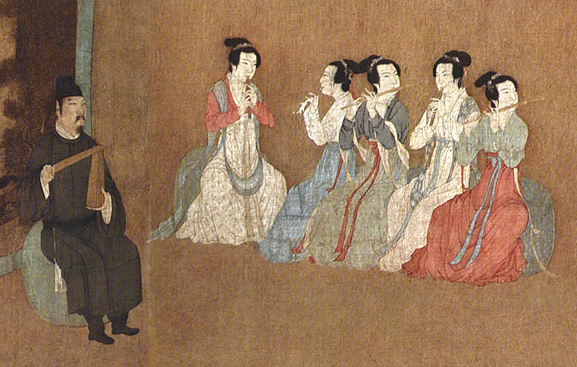During the Western Han dynasty, the “dark style” has been carried from the Qin Dynasty, where black is the preferred color. Court dress in this period was black and when performing sacrificial ceremonies, the formal dress was edged with red. Characteristics of clothing in this time are square sleeves, sloping necklines, red clothes, red shoes and cicada-like hat. Clothes worn by high ranking officials and ordinary people basically have the same style. The only way to identify the position or rank of a person in the society is by the color and the quality of the materials used in his clothing.
At the time of the Eastern Han dynasty, red became the color that is most respectful because it symbolizes the “fire virtue” of the Han Dynasty. The government officials of this period wore clothes with colors that conform to the season, according to the Five Elements theory. When spring begins a ceremony is held at the eastern suburbs and clothes as well as carriages were gray-green in color. When summer begins, a ceremony is held at the southern suburbs and the preferred color was red. When autumn begins, the preferred color was yellow and when winter begins, the preferred color was black.
There were two categories for clothing in the Han Dynasty. They were either the Shenyi (or long coat developed in the Western Han Dynasty) or the Yijin (which makes up the front of the jacket/gown and can be made up of one or two pieces). It’s been said though that a few people wore the Shenyi during the Eastern Han Dynasty.
Women in this period wore long pants and long jackets. They also wear a long intricate belt. Their accessories are quite delicate and very expensive and they show the class a woman belongs to in the society.
